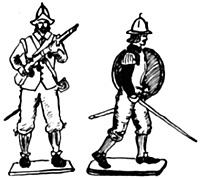
War in the Low Countries followed a singular pattern as normal troop movements were not possible in territory so cut up by canals, dykes, marshy estuaries and broad tidal rivers. In a long campaign featuring sea power, fortification and siegecraft, the Dutch gained independence mainly through their advanced methods of defending and attacking cities; towns being attacked by Dutch arquebusiers on skates using frozen waterways, Mines and counter-mines were sunk in the frozen soil; subterranean fighting taking place in galleries far below ground before explosions blew up both defences and defenders. Maurice of Nassau, creator of new tactics, reformed Dutch infantry so that they employed a practical combination of Roman tactics with gunpowder weapons. Maurice believed that manoeuvering and siege-craft were more likely to gain independence than winning pitched battles and he used barges on inland waterways to mass the entire Dutch Army and artillery from one end of the country to the other. He roamed the Netherlands with a compact force that seldom exceeded 10,000 men and when a truce was declared in 1609 he had control of the Northern Territories.
Back to Table of Contents -- Wargamer's Newsletter # 131
To Wargamer's Newsletter List of Issues
To MagWeb Master Magazine List
© Copyright 1973 by Donald Featherstone.
This article appears in MagWeb.com (Magazine Web) on the Internet World Wide Web.
Other articles from military history and related magazines are available at http://www.magweb.com